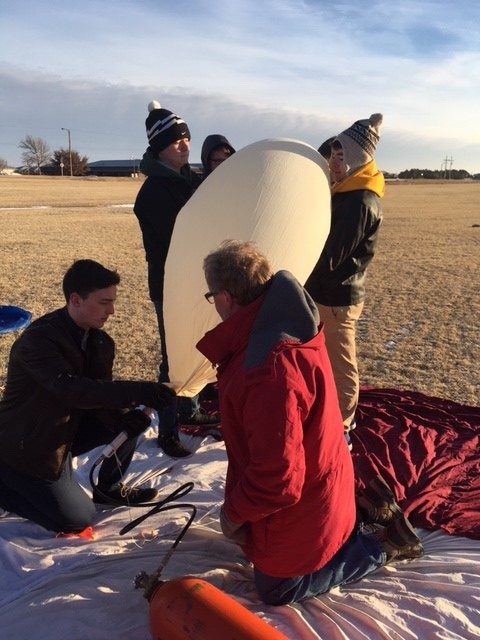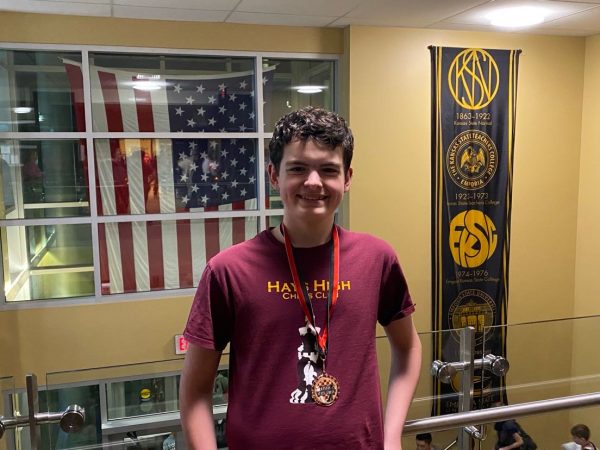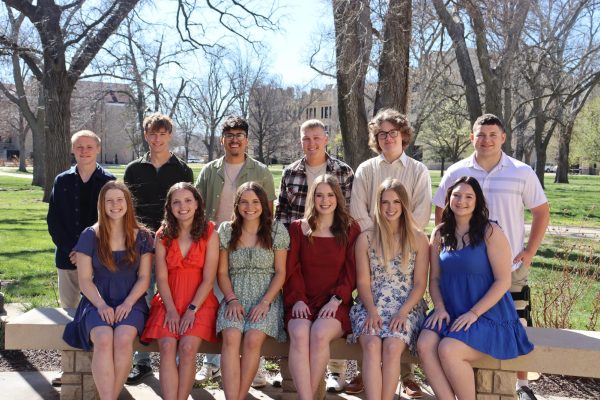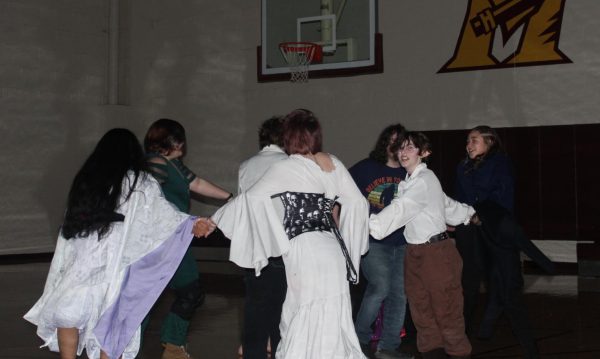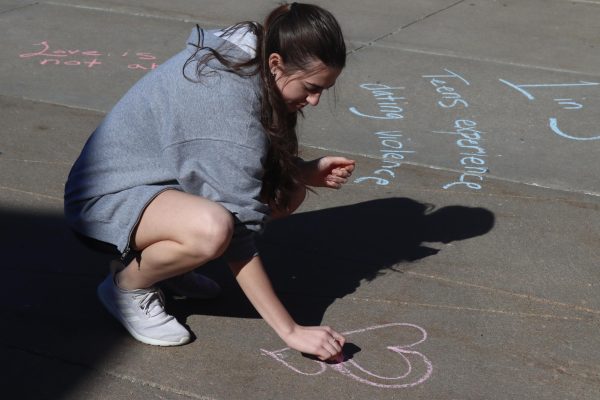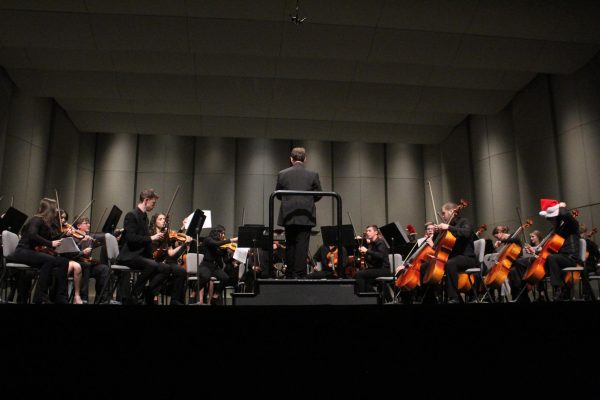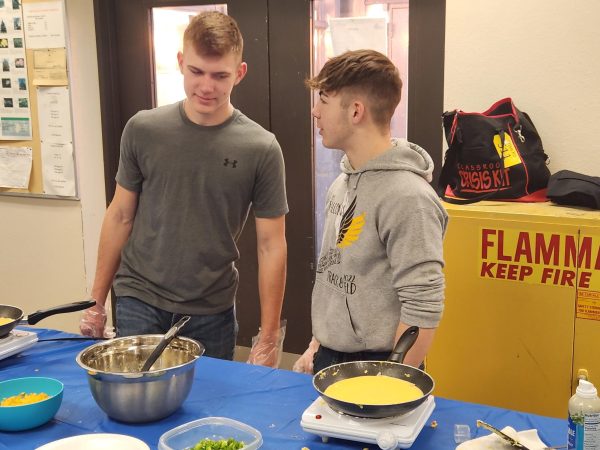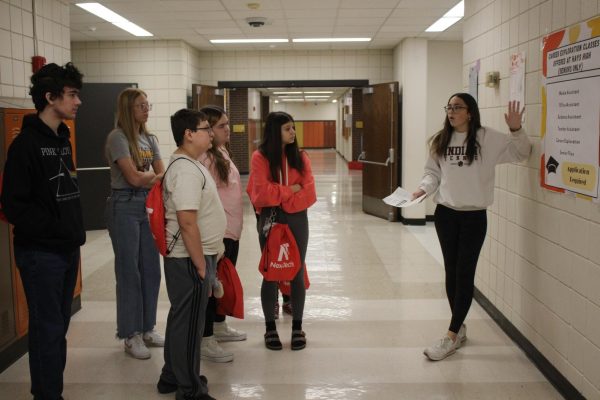Physics students launch updated experiments with high altitude balloon
Seniors Garret Rymer, Spencer Wittkorn, Benton McGrath and Cameron Karlin help fill the balloon with helium.
In science, experiments are often repeated to make sure the outcome is right. In high school students don’t always have the chance to repeat their experiments but this year’s physics class got to repeat their high altitude balloon launch after their first attempt landed about 10 minutes outside of Hays because of holes in the balloon.
Fort Hays State University’s Maker Space paid for the helium and balloon and helped students launch it by the teacher’s parking lot on Jan. 25.
This gave the students a chance to improve their experiments and add on to their experiments. One group added an experiment to test the effects of the atmosphere on bubble wrap on to their radiation in the atmosphere experiment. The second group was already recording atmospheric pressure and the force of the box as it hit the ground and they added a raspberry P.I.E.
This time the balloon made it out of Hays, landing a little south of Ellsworth in a farmers field. The students asked the landowner for permission to search their land and shortly found the parachute and trackers that had been placed on the balloon, but no payload. The packages had fallen off somewhere between the high school and the field.
Senior Joey Wei said during the first launch the balloon had tiny holes that were letting out helium slowly so the balloon never reached its potential altitude, so the groups could not gather the data they needed for their experiments.
“We are currently reaching out through social media and we are currently trying to find the packages as a class,” senior Garret Rymer said. “We think it dropped either early in the ascent or dropped somewhere on the decent.
In class the students are trying to determine where the payload landed and will present to the class. Then as a whole the class will decide which location is most likely.
“This is a very basic engineering project that has a lot of real world problems to solve,” Wei said. “Students can learn from these problems by finding new ways to solve them.”
This was the first year that the physics class has attempted to launch experiments with a high altitude balloon, but even though they haven’t gotten the results they wanted, they are learning ways to improve it for future students.
“I think it is a good project because it allows students to apply knowledge and skill into skill work,” Rymer said.
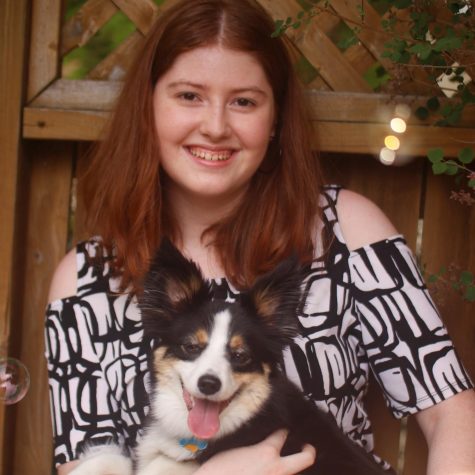
Rebekah Porter is a senior and this is her second year in Newspaper. She is also involved in tennis and band. She likes reading and spending time with...


